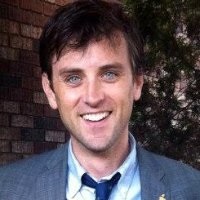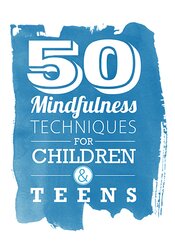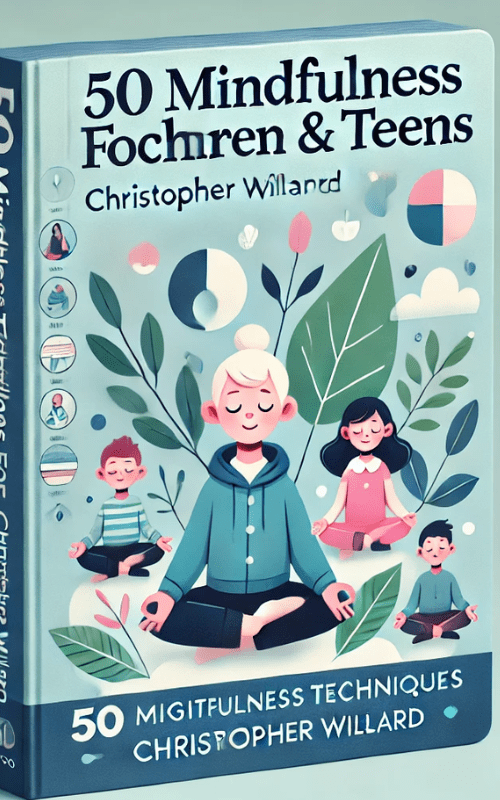50 Mindfulness Techniques for Children & Teens – Christopher Willard
50 Mindfulness Techniques for Children & Teens – Christopher Willard has the same quality as the author’s salapage.
Overview
Salepage check: 50 Mindfulness Techniques for Children & Teens
Author: Christopher Willard
- Faculty:
- Christopher Willard
- Duration:
- 5 Hours 42 Minutes
- Format:
- Audio and Video
- Copyright:
- Jan 31, 2018
Description
- Give kids tools to recognize and work with their difficult emotions and impulses
- Promote mindfulness practice outside the clinical hour
- Techniques to engage the most resistant and reluctant kids
- Adapt mindfulness exercises to all kinds of minds
- Use technology to support practice
- Mindfulness to complement play, CBT, expressive, dynamic and other therapies
- Techniques for challenges at home, the classroom, performances and social situations
Discover proven techniques for depression, ADHD, anxiety, anger, acting out, trauma and more. Mood boosters for depression include movement such as mindful walking, mindful yoga, and mindful qi-gong. Proven practices for ADHD, executive function and impulse control disorders include “urge surfing,” “STOP,” “SLOW”, “SIFT” and more. Skills to soothe trauma and anxiety like “seeking stillness,” “touchpoints,” and “four elements” practices will be taught and practiced as a group. We will practice skills that build emotional and social intelligence, including mindfulness of music, listening and body awareness exercises.
Mindfulness is more than just breathing, and so is this workshop. Participants should be prepared for an experiential day practicing a variety of mindfulness techniques including awareness, movement, games, play, and creative/expressive activities that can be practiced by young people and adults alike. Special attention will also be given to harnessing the power of technology and social media. Learning will take the form of lecture, video, case presentations, small group and dyad activities as well as experiential activities and ample time for question and answer and discussion with colleagues.
Join author and psychologist Dr. Christopher Willard in this engaging workshop! He will share personal and professional anecdotes from his experience as a working psychologist from inner-city schools to college campuses, from Harvard Medical School to teen meditation retreats. This workshop inspires, but more importantly empowers you with the tools you need to offer mindfulness practices to young people in practical yet engaging ways.
To order the book, Mindfulness Skills for Kids & Teens: A Workbook for Clinicians & Clients with 154 Tools, Techniques, Activities & Worksheets, please visit our product store.
To order the book, 55 Creative Approaches for Challenging & Resistant Children & Adolescents: Techniques, Activities, Worksheets, please visit our product store.
Handouts
| Manual 062640 (5.39 MB) | 45 Pages | Available after Purchase | |
| Special Offer For Webcast Viewers (5.27 MB) | Download |
Outline
- Mindfulness: What’s all this “nothingness” about?
- It’s not just breathing. What mindfulness is, and what it isn’t
- The stress response on development, learning, and mental health
- Harness the healing power of mind-body relationship
- Give kids tools to recognize and work with their emotions and impulses
- Transform fight or flight to attend and befriend
- Facilitate child and teen brain development
- PRACTICE MINDFULNESS IN THE TREATMENT HOUR
- Introduce and Adapt Mindfulness Practices for Young People
- Play, games, video, arts, and athletics
- Adapt mindfulness exercises to all kinds of minds
- CBT, dynamic, expressive and play therapies
- Assessment and Treatment Planning
- When to use, and when to avoid, mindfulness practices
- The five stage model
- Mindfulness-based holistic treatment plan
- Strategies to Engage Challenging Kids
- Develop skills to engage the most resistant and reluctant kids
- Tips for teaching a range of learning styles
- Create an environment of safety and exploration
- Strength-based approach to match the treatment to the child
- Proven Techniques for Depression, ADHD, Anxiety and More
- Build emotional intelligence
- Mind-body awareness, listening meditation and others
- Boost mood with mindful appreciation, mindful movement
- Slowing down with STOP, SLOW, SIFT, Urge surfing practices
- Self-soothing skills for trauma and anxiety disorders
- Mindful grounding with touchpoints, the four elements and more
- Introduce and Adapt Mindfulness Practices for Young People
- MAKE MINDFULNESS STICK OUTSIDE THE TREATMENT HOUR (WHERE IT REALLY MATTERS!)
- It doesn’t have to be an hour on a cushion – Finding the time
- 100 activities for kids (and adults!) to do mindfully
- 50 simple reminders to bring kids back to the present
- Dozens of effective tools that take less than a minute
- “Stealth” mindfulness that kids can do without anyone even knowing
- Techniques for challenges at home, the classroom, performances and social situations
- Ease difficult transition times
- Checking in, not checking out – Working with technology/social media
Faculty

Christopher Willard, Psy.D. Related seminars and products: 12
Teaching Associate
Harvard Medical School
Christopher Willard, Psy. D., is one of the world’s leading experts on mindfulness with young people, having trained thousands of professionals and young people on the practice and benefits of mindfulness.
He is a psychologist and consultant based in Boston, working individually as well as consulting to schools, hospitals and other organizations. Additionally, he is the author of multiple books on psychology, child development, contemplative practice and more. Dr. Willard is the president of the Mindfulness in Education Network and serves on the board of directors at the Institute for Meditation and Psychotherapy. In addition to serving on the faculty of Harvard Medical School, Dr. Willard leads courses and workshops around the world and online.
Dr. Willard is the co-author of The Mindfulness Skills Activity Book for Children (PESI, 2018), and the author of Child’s Mind (Parallax Press, 2010), Growing Up Mindful (Sounds True, 2016) and numerous others. He is also the co-author of the bestselling Growing Mindful (PESI, 2015), Growing Mindful 2nd Edition (PESI, 2019), Growing Mindful Spanish Edition (PESI, 2016), Growing Happy (PESI, 2016), Mindful Reminders (PESI, 2016), The Self-Compassion (PESI, 2016) and Anti-Burnout (PESI, 2017) card decks.
When not working, he enjoys time with his family, traveling, cooking, eating, hiking, writing and any combination of these he can manage.
Speaker Disclosures:
Financial: Christopher Willard maintains a private practice. He receives royalties as an author for New Harbinger Publishing, Guilford Press, and Parallax Press. Dr. Willard is the president of the Mindfulness in Education Network. He is on the board of directors at the Institute for Meditation and Psychotherapy and is faculty of Harvard Medical School. Dr. Willard receives a speaking honorarium from PESI, Inc.
Non-financial: Christopher Willard has no relevant non-financial relationship to disclose.
Curriculum
FAQs
Requirements
- A stable internet connection for accessing the course materials.
- A device capable of viewing digital courses (laptop, tablet, or smartphone).
- No prior mindfulness experience required; open to parents, educators, and professionals.
Features
- 50 Proven Mindfulness Techniques: Practical exercises tailored for children and teens.
- Expert Guidance: Created by Christopher Willard, a leading mindfulness educator.
- Flexibility: Techniques adaptable to various age groups and settings.
- Downloadable Resources: Worksheets and guides to implement mindfulness in daily life.
- Real-Life Applications: Strategies for managing anxiety, improving focus, and building emotional resilience.
Target audiences
- Parents looking to introduce mindfulness to their children.
- Educators and school counselors seeking tools to support emotional well-being in the classroom.
- Therapists and mental health professionals working with children and teens.
- Anyone passionate about fostering emotional intelligence and resilience in younger generations.




